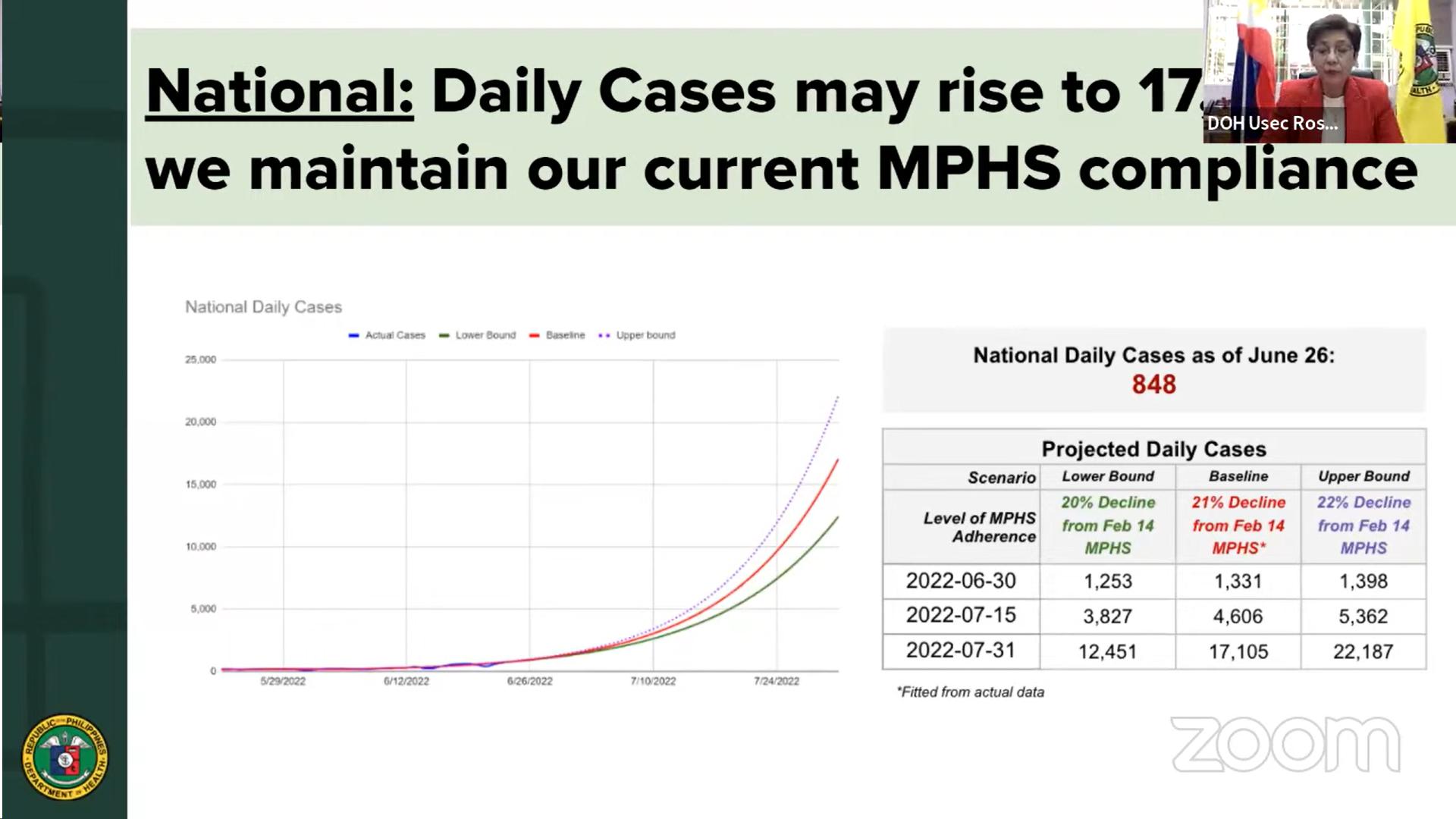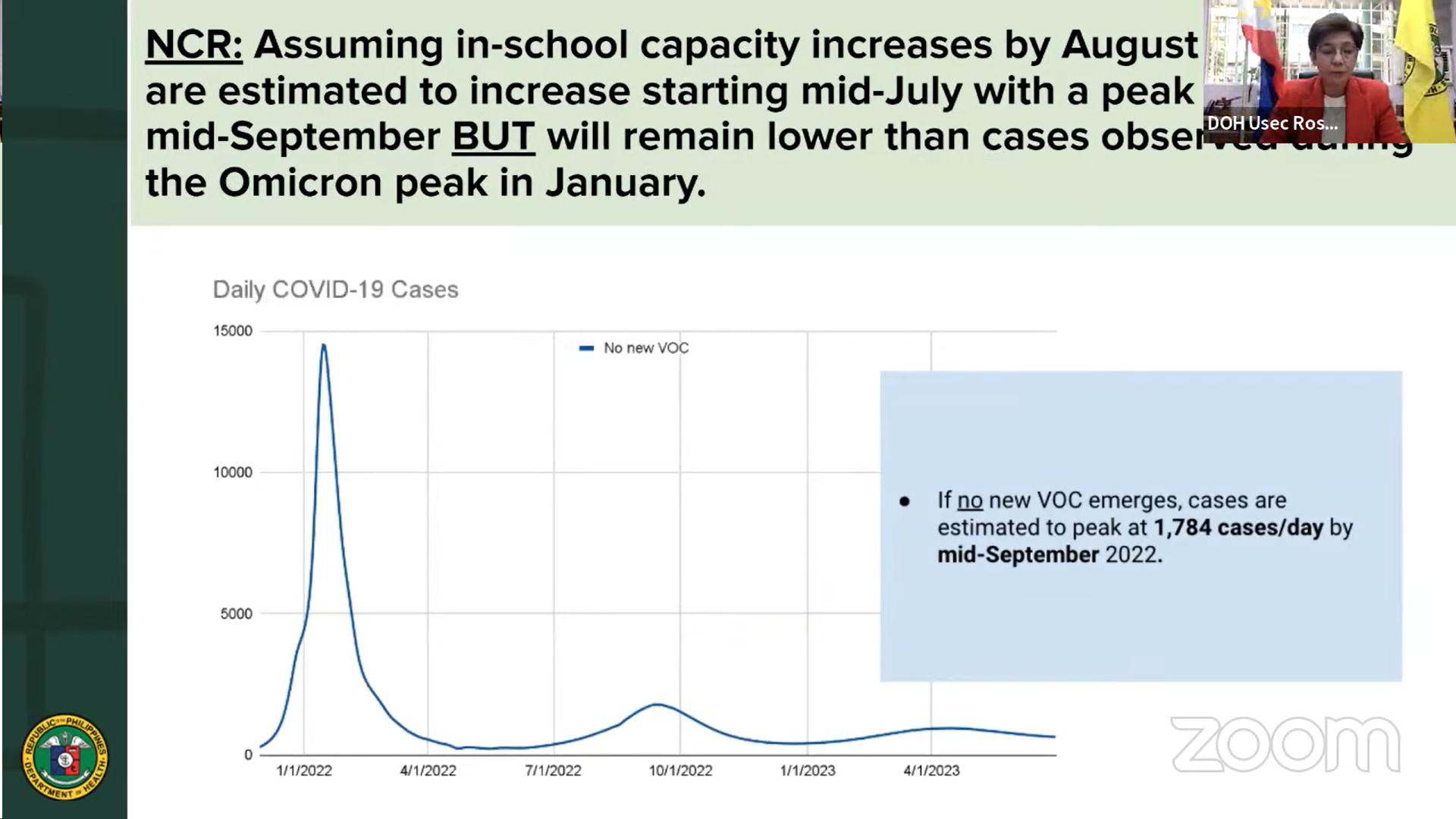By Alec Go
The Department of Health (DOH) said the number of COVID-19 cases in the Philippines continues to increase, with 17,105 projected daily cases by the end of July if the 21% decline in health protocol compliance is maintained.
Based on the projections based on the FASSSTER model, daily cases on the national level may rise to 1,331 by June 30 and to 4,606 by July 15 with a 21% reduction in minimum public health standard (MPHS) compliance.
If the observance of MPHS goes down by 22%, daily cases may go up to 1,398 by June 30, to 5,362 by July 15, and to 22,187 by July 31.

“[If] mobility continues to increase, compliance to MPHS continues to reduce (20-22% reduction), and booster uptake is maintained at this low level, we may see 3,800 to 5,300 daily cases nationally by mid July,” DOH USec. Maria Rosario Vergeire said in a message to reporters on June 28.
The FASSSTER model considered vaccine effectiveness, mobility of the population, minimum public health standards and isolation protocols compliance, and the entry of imported cases.
Projections for Metro Manila
In a media forum on June 28, the DOH said cases may increase “starting mid-July with a peak in mid-September, but will remain lower than cases observed during the Omicron peak in January.”
This is if face-to-face classes capacity rises in August from 10% to 90% without the detection of another variant of concern.
“Makakakita tayo ng mabagal na pagtaaas na mag-uumpisa sa mid-July at maaaring magkaroon ng low peak sa kalagitnaan ng Setyembre kung saan aabot ang bilang ng mga kaso sa 1,784 cases kada araw,” Vergeire said.

She added that the increase can be attributed to “increased contact rate, waning immunity” and other factors.
In terms of COVID-19 hospitalizations, total and intensive care units (ICU) admissions may peak later in September.
“Tinatayang nasa kalahati lamang po ito ng peak hospitalizations noong nagkaroon tayo ng Omicron peak noong nakaraang Enero. Kaya itong i-accommodate ng kasalukuyang kapasidad ng NCR na mayroon tayong 4,810 total beds and 937 ICU beds para sa COVID-19,” she said. – gb
